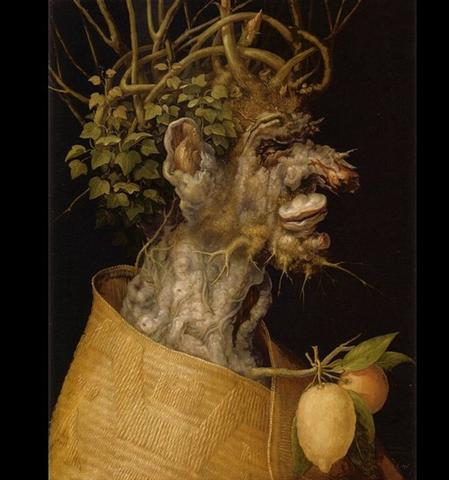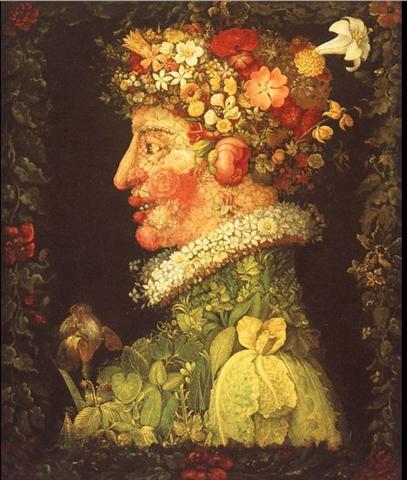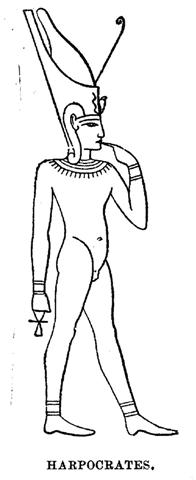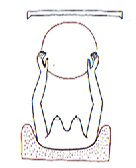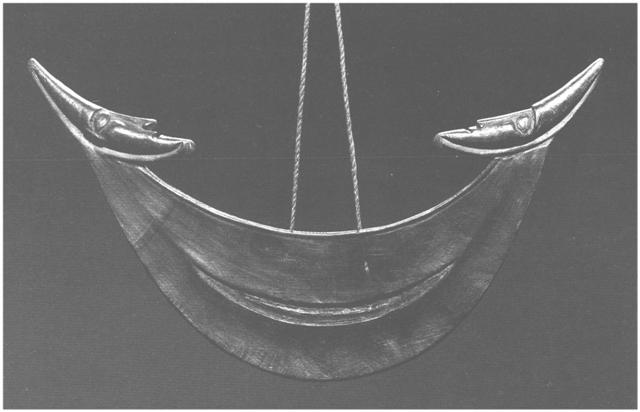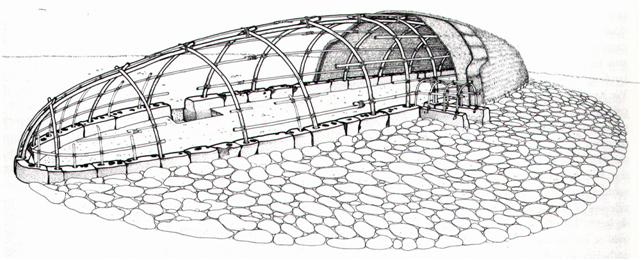237. When in the first day of the efforts to create Sampo there arose an evil cross-bow in the 'fire' (at the great circle of the horizon, the line of Horus) it could have referred to the ancient time when the lazy female archer shot her 'arrow' into 'the navel of the sea' in order to retrieve wooden sticks for fire-rubbing, to make them wash ashore and be available for kindling a new fire. ... In Dr. 55.g, we see the Xul-animal, all his facial marks appearing, hanging by his tail from the sky-band.
With tail and both paws he holds flaming torches. These 3 torches of Xul resemble those in the hands of Jupiter and Itzam-Yeh:
Above in the text we see our form 19.3.1
the superfix [subfix I would say] is a club, constantly appearing as an instrument of attack; it is neither spear nor knife, and also shows the same marks as are seen on wooden posts, for the knots; the prefix we shall later see defined as the conventionalized flames of firewood ... Probably the old man's daughter was lazy because it was a time of solstice, when the Sun went slowly, as if old. And the door-mouse (cfr French dormir = to sleep) had also a hard time keeping awake. To revitalize him, they (March Hare and Mad Hatter, MH¹ & MH²) pushed his head down into the t-kettle (South Dipper in the Sagittarius constellation):
The long legs of the March Hare has marks resembling rivulets of water, whereas the short legs of the Mad Hatter are like tilled fields of earth:
On the other side of the year it was not the head but the feet which went down first: ... The four males and the four females were couples in consequence of their lower, i.e. of their sexual parts. The four males were man and woman, and the four females were woman and man. In the case of the males it was the man, and in the case of the females it was the woman, who played the dominant role. They coupled and became pregnant each in him or herself, and so produced their offspring. But in the fullness of time an obscure instinct led the eldest of them towards the anthill which had been occupied by the Nummo. He wore on his head a head-dress and to protect him from the sun, the wooden bowl he used for his food. He put his two feet into the opening of the anthill, that is of the earth's womb, and sank in slowly as if for a parturition a tergo. The whole of him thus entered into the earth, and his head itself disappeared. But he left on the ground, as evidence of his passage into that world, the bowl which had caught on the edges of the opening. All that remained on the anthill was the round wooden bowl, still bearing traces of the food and the finger-prints of its vanished owner, symbol of his body and of his human nature, as, in the animal world, is the skin which a reptile has shed ... Then, in the 2nd day of the work for creating Sampo, an evil ship arose from the flames:
... It must also be mentioned that Puppis (the Stern of Argo) is part of the Mesopotamian constellation of Bow and Arrow ... ... According to a variety of sources of the legend, the Argo was said to have been planned or constructed with the help of Athena. According to other legends it contained in its prow a magical piece of timber from the sacred forest of Dodona, which could speak and render prophecies. Argo Navis is the only one of the 48 constellations listed by the 2nd century astronomer Ptolemy that is no longer officially recognised as a constellation. It was unwieldy due to its enormous size: were it still considered a single constellation, it would be the largest of all. In 1752, the French astronomer Nicolas Louis de Lacaille subdivided it into Carina (the keel, or the hull, of the ship), Puppis (the poop deck), and Vela (the sails). When Argo Navis was split, its Bayer designations were also split. Carina has the α, β and ε, Vela has γ and δ, Puppis has ζ, and so on. The constellation Pyxis (the mariner's compass) occupies an area which in antiquity was considered part of Argo's mast (called Malus). However, Pyxis is not now considered part of Argo Navis, and its Bayer designations are separate from those of Carina, Puppis and Vela ... The red ship which rose from the flames in day 2 could have been Argo Navis, the stern of which (or at least some important stern ornament) had been cut off ... The Symplegades ... or Clashing Rocks, also known as the Cyanean Rocks, were, according to Greek mythology, a pair of rocks at the Bosphorus that clashed together randomly. They were defeated by Jason and the Argonauts, who would have been lost and killed by the rocks except for Phineus' advice. Jason let a dove fly between the rocks; it lost only its tail feathers. The Argonauts rowed mightily to get through and lost only part of the stern ornament. After that, the Symplegades stopped moving permanently ... when the Argonauts rowed as quickly as they could through the jaws of the randomly clashing rocks. Perhaps this would have 'disabled' the ship and made it fall down to its current position at the bottom of the sea in a state of broken up pieces.
… to enter a war canoe from either the stern or the prow was equivalent to a 'change of state or death'. Instead, the warrior had to cross the threshold of the side-strakes as a ritual entry into the body of his ancestor as represented by the canoe. The hull of the canoe was regarded as the backbone of their chief. In laments for dead chiefs, the deceased are often compared to broken canoes awash in the surf ... ... the oak had made trouble right from the start. When (in the second rune of the Kalevala) Sämpsä Pellervöinen had sowed trees, it was the oak alone that would not grow until four or five lovely maidens from the water, and a hero from the ocean, had cleared the ground with fire and planted an acorn in the ashes; and once it had started, the growth of the tree could not be stopped: And the summit rose to heaven // And its leaves in air expanded, // In their course the clouds it hindered, // And the driving clouds impeded, // And it hid the shining sunlight, // And the gleaming of the moonlight. Then the aged Väinämöinen, // Pondered deeply and reflected, // 'Is there none to fell the oak-tree, // And o'erthrow the tree majestic? // Sad is now the life of mortals, // And for fish to swim is dismal, // Since the air is void of sunlight, // And the gleaming of the moonlight.' 'One sought above in the sky, below in the lap of the earth', as we are informed by variants, but then Väinämöinen asked his devine mother for help. Then a man arose from ocean // From the waves a hero started, // Not the hugest of the hugest, // Not the smallest of the smallest. // As a man's thumb was his stature; // Lofty as the span of woman. The 'puny man from the ocean', whose 'hair reached down to his heels, the beard to his knees', announces, 'I have come to fell the oak tree / And to splinter it to fragments'. And so he does. In several variants the oak is said to have fallen over the Northland River, so as to form the bridge into the abode of the dead. Holmberg (quoted by Lauri Honko, 'Finnen', Wb. Myth., p. 369) took the oak for the Milky Way ...
Down in the south the golden prow of the ship was colliding with the Oak tree of King Charles: ... Robur Carolinum, Charles' Oak, the Quercia of Italy and the Karlseiche of Germany, was formally published by Halley in 1679 in commemoration of the Royal Oak of his patron, Charles II, in which the king had lain hidden for twenty-four hours after his defeat by Cromwell in the battle of Worcester, on the 3rd of September 1651 ... The tail of the Ship north of the equator, at Bos-phorus the wading place (poros) where the cattle (bous) went through water,
could be regarded as the prow of the ship down in the south because at the end ('tail') of the northern summer would come the beginning ('head') of the southern summer.
Cattle were counted in heads.
The henua type of sign above the tail of the 'Amor Ship' is concave to the right which ought to mean Sun light was high above and in front:
When the Sun sailed in the night the first half of his journey was longer (15 units of time we can perceive) than the 2nd half (12 units of time), and evidently 3 (= 15 - 12) units went missing somewhere in between:
.. The four bereaved and searching divinities, the two mothers and their two sons, were joined by a fifth, the moon-god Thoth (who appears sometimes in the form of an ibis-headed scribe, at other times in the form of a baboon), and together they found all of Osiris save his genital member, which had been swallowed by a fish ... ... Väinämöinen set about building a boat, but when it came to the prow and the stern, he found he needed three words in his rune that he did not know, however he sought for them. In vain he looked on the heads of the swallows, on the necks of the swans, on the backs of the geese, under the tongues of the reindeer. He found a number of words, but not those he needed. Then he thought of seeking them in the realm of Death, Tuonela, but in vain. He escaped back to the world of the living only thanks to his potent magic. He was still missing his three runes. He was then told by a shepherd to search in the mouth of Antero Vipunen, the giant ogre. The road, he was told, went over swords and sharpened axes. Ilmarinen made shoes, shirt and gloves of iron for him, but warned him that he would find the great Vipunen dead. Nevertheless, the hero went. The giant lay underground, and trees grew over his head. Väinämöinen found his way to the giant's mouth, and planted his iron staff in it. The giant awoke and suddenly opened his huge mouth. Väinämöinen slipped into it and was swallowed. As soon as he reached the enormous stomach, he thought of getting out. He built himself a raft and floated on it up and down inside the giant. The giant felt tickled and told him in many and no uncertain words where he might go, but he did not yield any runes. Then Väinämöinen built a smithy and began to hammer his iron on an anvil, torturing the entrails of Vipunen, who howled out magic songs to curse him away. But Väinämöinen said, thank you, he was very comfortable and would not go unless he got the secret words. Then Vipunen at last unlocked the treasure of his powerful runes. Many days and nights he sang, and the sun and the moon and the waves of the sea and the waterfalls stood still to hear him. Väinämöinen treasured them all and finally agreed to come out. Vipunen opened his great jaws, and the hero issued forth to go and build his boat at last ... ... The men on board the royal canoe looked out from Varinga Te Toremo (the northeastern cape of the Poike peninsula). Then they saw the canoe of the queen, the canoe of Ava Rei Pua, as it reached Papa Te Kena (on the northern shore, east of Hanga Oteo). Honga came and gazed in the direction below (i.e., toward the west). He called out to the noteworthy ruler (? ariki motongi) Hotu: 'There is the canoe of the queen! It will be the first one to land!' At this news King Hotu replied to Honga, 'Recite (rutu) ('powerful incantations') as though the ten brothers of the chief (ariki maahu) were one whole (?).' The ten recited with all their might. This is what they recited: 'Let all movement (? konekone) cease!' They recited and sailed on swiftly: Honga, Te Kena, Nuku Kehu, Nga Vavai, Oti, Tive (corrected for 'Sive'), Ngehu, Hatu, Tuki, and Pu (corrected for 'Bu'). He worked mana in the fishing grounds ... [E :80 → 0h, 354 + 10 = 364.]And clearly this Egyptian old ('autumn') ship went in the sea
whereas the 'spring' ship
landed at the elbow of the goddess of night (Nut). ... During his descent the ancestor still possessed the quality of a water spirit, and his body, though preserving its human appearance, owing to its being that of a regenerated man, was equipped with four flexible limbs like serpents after the pattern of the arms of the Great Nummo. The ground was rapidly approaching. The ancestor was still standing, his arms in front of him and the hammer and anvil hanging across his limbs. The shock of his final impact on the earth when he came to the end of the rainbow, scattered in a cloud of dust the animals, vegetables and men disposed on the steps. When calm was restored, the smith was still on the roof, standing erect facing towards the north, his tools still in the same position. But in the shock of landing the hammer and the anvil had broken his arms and legs at the level of elbows and knees, which he did not have before. He thus acquired the joints proper to the new human form, which was to spread over the earth and to devote itself to toil ... When in spring the Sun sucked up all the pools of sweet water the land was destined to become desiccated in high summer. ... He was moreover confronted with identifications which no European, that is, no average rational European, could admit. He felt himself humiliated, though not disagreeably so, at finding that his informant regarded fire and water as complementary, and not as opposites. The rays of light and heat draw the water up, and also cause it to descend again in the form of rain. That is all to the good. The movement created by this coming and going is a good thing. By means of the rays the Nummo draws out, and gives back the life-force. This movement indeed makes life. The old man realized that he was now at a critical point. If the Nazarene did not understand this business of coming and going, he would not understand anything else. He wanted to say that what made life was not so much force as the movement of forces. He reverted to the idea of a universal shuttle service. 'The rays drink up the little waters of the earth, the shallow pools, making them rise, and then descend again in rain.' Then, leaving aside the question of water, he summed up his argument: 'To draw up and then return what one had drawn - that is the life of the world' ... From the time when the Sun rose at the horizon in the morning (of the day of the year) until he had grown up and reached his maximum height at noon (midsummer) he was growing because he was sucking:
Notably the 'arm' in front in Aa1-18 (alluding to 118 = 4 * 29½) has Moon crescents added and at Aa1-20 this 'ship' had been overturned and uplifted as a sign of having securely reached 'dry land' ('made land-fall').
... The first god's house in the temple was the body of Ta'aroa's own person, and it became a model for all other god's houses. One day Ta'aroa let himself go into a trance and his spirit stood away in space while his body floated in the sea, then he said to his daughters: 'Oh, girls! How many canoes are there at sea?' And the daughters replied: 'It is like one, it is like one!' Then Ta'aroa's spirit said: 'Who can it be?' And they answered: 'It is thyself assuredly!' ... ...After the food supplies had been brought on land, the two rulers, the king and the queen said, 'Drag the canoes on land and take them apart (so the wood can be used) to build houses and cover the roofs!' They dragged the two canoes on land and took them apart. After they had finished disassembling the canoes, Nuku covered all the houses ... [E:84]
|

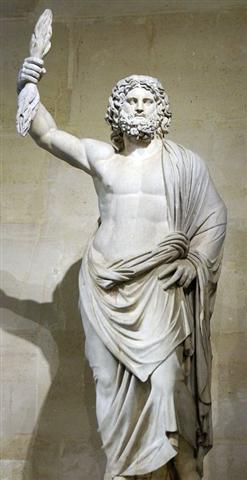
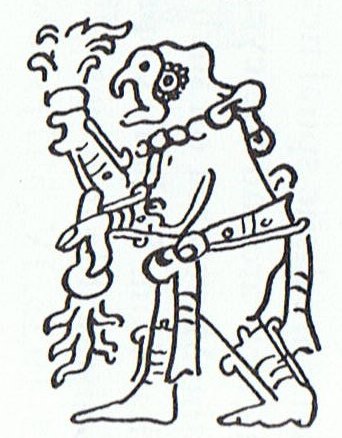

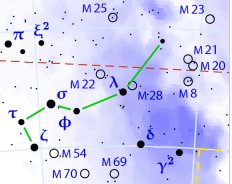


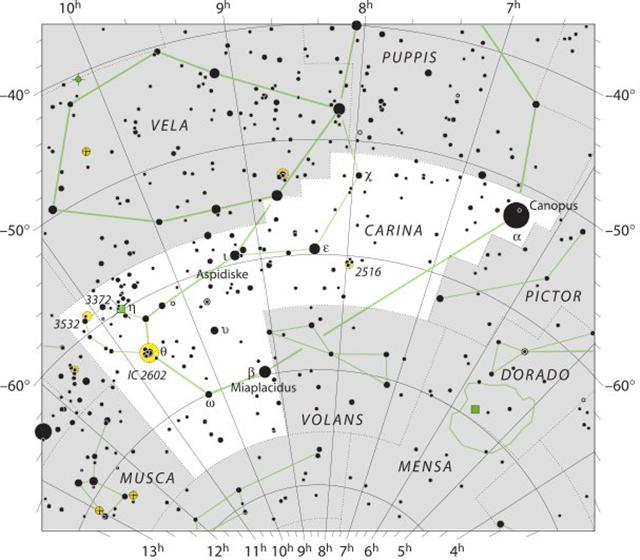
.jpg)
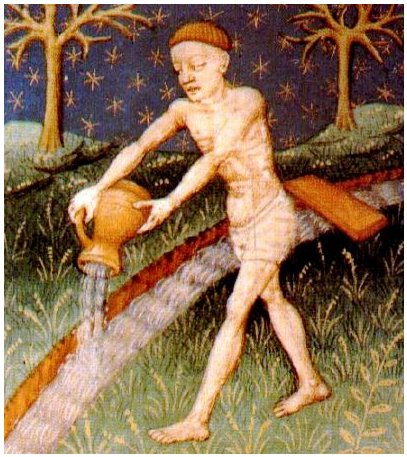
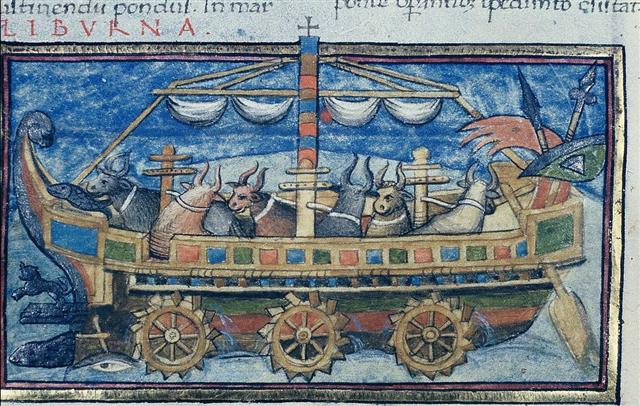
.jpg)

